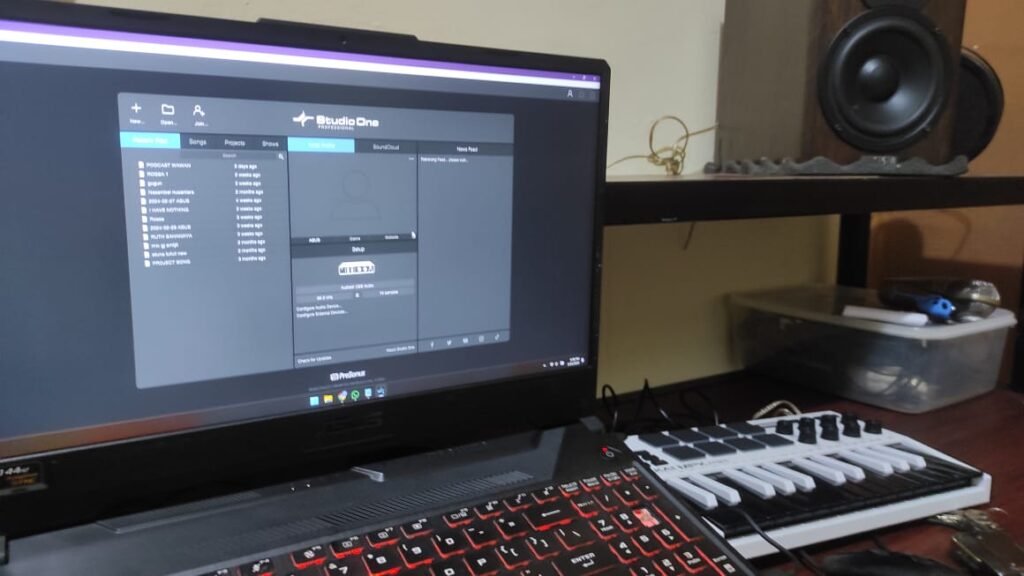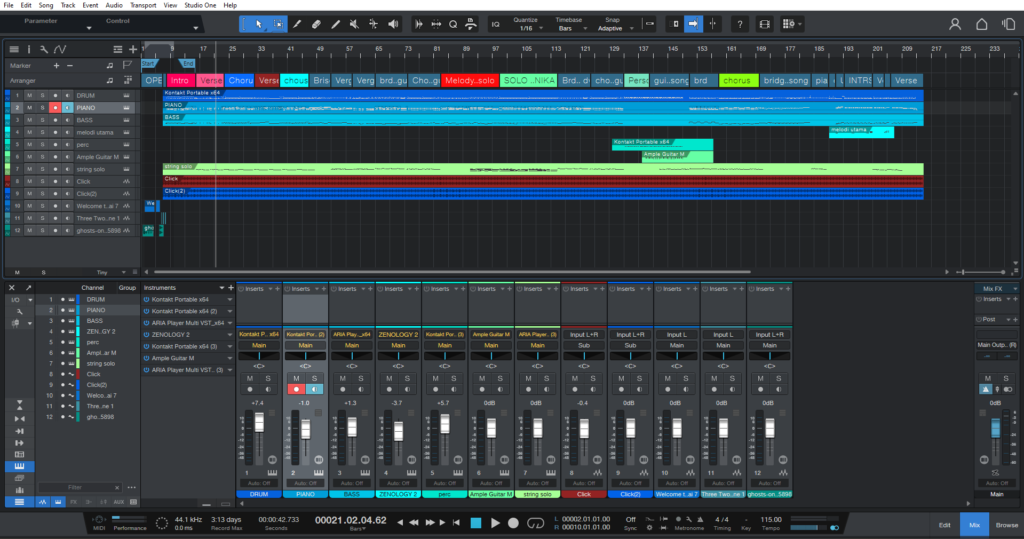As a professional composer and music enthusiast, mastering a Digital Audio Workstation (DAW) is crucial for bringing your musical ideas to life. Among the myriad of options available, Studio One has emerged as a powerhouse in the realm of music production software. Developed by PreSonus, Studio One combines intuitive design with powerful features, making it a top choice for producers, composers, and audio engineers alike. In this comprehensive guide, we’ll delve into the secrets of Studio One, uncovering essential techniques and workflows that will help you take your productions to the next level.
Understanding the Foundation: An Introduction to Studio One
Studio One is a cutting-edge DAW designed to streamline the music production process and unleash your creativity. With its single-window interface, intuitive tools, and robust feature set, Studio One provides a seamless environment for recording, editing, mixing, and mastering music. Whether you’re a beginner or a seasoned pro, Studio One offers a wealth of capabilities to help you bring your musical vision to life with precision and flair.
Essential Techniques for Producers
1. Setting Up Your Workspace
Before diving into your production, take the time to configure your workspace in Studio One to suit your workflow preferences. Organize your tracks, arrange your windows, and customize your keyboard shortcuts to optimize efficiency and productivity. By creating a tailored workspace, you can streamline your workflow and focus on the creative process.
2. Recording and Tracking
Studio One offers a range of recording options to capture your musical performances with precision. Whether you’re recording vocals, instruments, or MIDI sequences, familiarize yourself with Studio One’s recording tools and techniques. Experiment with different microphone placements, input settings, and recording modes to achieve the perfect sound for your tracks.

3. Editing and Arranging
Editing is a fundamental aspect of music production, and Studio One provides powerful tools to manipulate your audio and MIDI data with ease. From basic editing tasks like cutting and trimming to more advanced techniques like comping and quantization, explore Studio One’s editing capabilities to refine your arrangements and enhance your compositions.
4. Mixing and Processing
Achieving a polished mix is essential for creating professional-quality music, and Studio One offers a comprehensive set of mixing and processing tools to help you achieve your desired sound. Experiment with EQ, compression, reverb, and other effects to sculpt your tracks and create depth and dimension in your mixes. Utilize Studio One’s mixer view to balance levels, pan positions, and automate parameters for dynamic and expressive mixes.

5. Mastering and Finalization
Mastering is the final step in the music production process, where you polish your tracks and prepare them for distribution. Studio One’s mastering tools allow you to apply the finishing touches to your music, including multiband compression, stereo widening, and loudness normalization. Take the time to fine-tune your masters and ensure they sound consistent and cohesive across different playback systems.
Advanced Techniques for Producers
1. Utilizing Virtual Instruments and Plugins
Studio One comes bundled with a vast array of virtual instruments and plugins, offering endless creative possibilities for producers. Experiment with synthesizers, samplers, and drum machines to craft unique sounds and textures for your productions. Explore third-party plugins and virtual instruments to expand your sonic palette and add depth and complexity to your tracks.
2. Harnessing MIDI and Automation
MIDI is a powerful tool for producers, allowing you to create intricate melodies, rhythms, and arrangements with precision. Learn how to harness MIDI in Studio One to program sequences, trigger virtual instruments, and control parameters in real-time. Experiment with automation to add movement and expression to your tracks, automating levels, panning, and effects for dynamic and immersive productions.
3. Collaborating and Sharing Projects
Studio One makes it easy to collaborate with other musicians and share your projects with collaborators and clients. Utilize Studio One’s cloud-based features to upload and share your projects securely, allowing others to collaborate remotely and provide feedback in real-time. Collaborate with fellow producers, vocalists, and instrumentalists to bring your musical ideas to fruition and create collaborative masterpieces.
Conclusion: Unleashing Your Creative Potential with Studio One
In conclusion, Studio One is a versatile and powerful DAW that offers a wealth of tools and capabilities for producers of all levels. By mastering essential techniques, exploring advanced workflows, and experimenting with creative possibilities, you can unlock the secrets of Studio One and take your productions to new heights. Whether you’re recording, editing, mixing, or mastering music, Studio One provides the tools and resources you need to unleash your creative potential and bring your musical visions to life with clarity and precision.